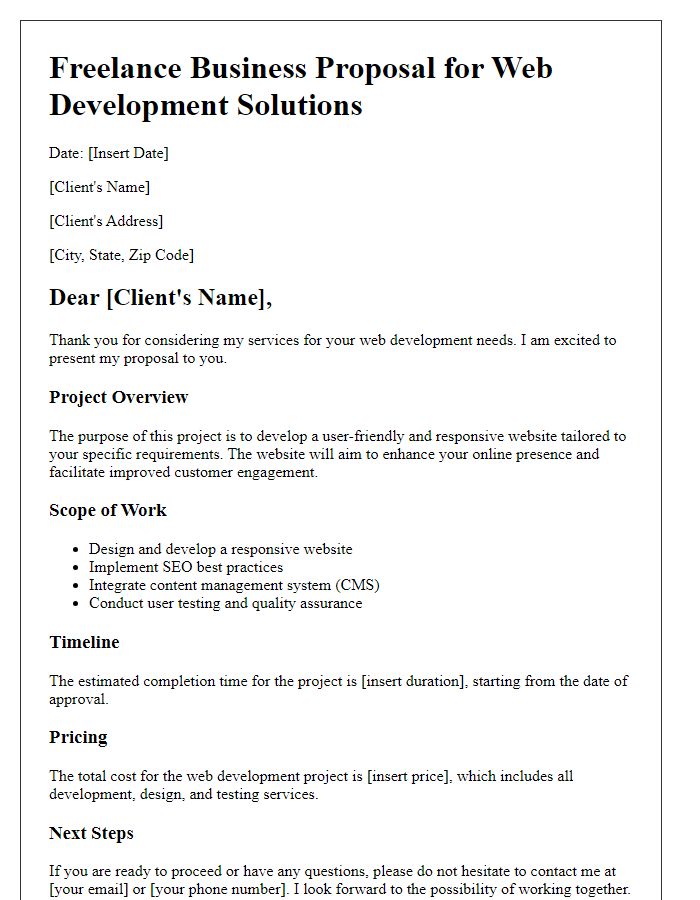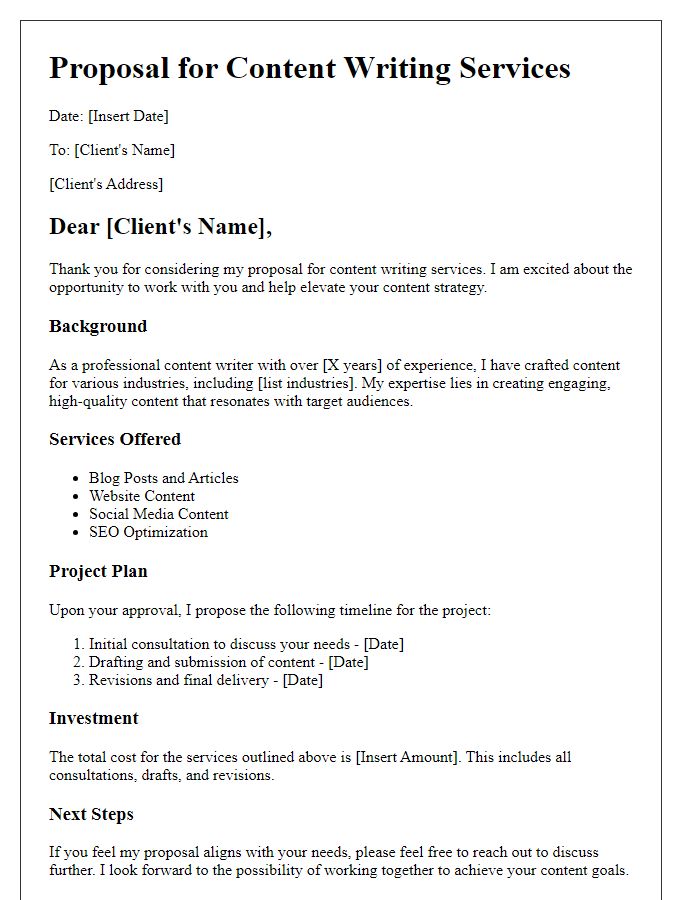Are you ready to elevate your freelance business and secure that dream client? Crafting the perfect proposal letter can make all the difference in showcasing your unique skills and professionalism. In this article, we'll walk you through a compelling letter template that captures attention and communicates your value effectively. So, grab your notepad and let's dive into the essentials of writing a standout freelance proposal!

Clear Introduction and Purpose
Freelance business proposals require a clear and concise presentation of intended services, showcasing skills and expertise. A well-structured introduction captures the reader's attention, specifying the project scope, objectives, and deliverables. For instance, addressing a potential client in the marketing sector could emphasize experience in digital marketing campaigns, illustrating success metrics from previous projects, such as a 30% increase in social media engagement over six months. Clarifying the purpose of the proposal establishes the significance and alignment with the client's goals while outlining how proposed services will address their specific needs. Providing relevant examples and key performance indicators (KPIs) enhances credibility, while a tailored approach demonstrates understanding of industry trends and challenges.
Detailed Services Offered
Freelance business proposals often detail an array of services tailored to meet client needs. Common services include graphic design, content writing, web development, and social media management. For graphic design, offerings may encompass logo creation and branding materials, including business cards and brochures. In content writing, focus on producing engaging articles, SEO-optimized blog posts, and press releases. Web development services may include building responsive websites using platforms like WordPress or Shopify, with custom functionalities tailored to client requirements. Social media management could cover strategy development, content creation, and performance analytics across platforms such as Instagram, Facebook, and Twitter. Providing examples of previous work and testimonials can enhance credibility and showcase expertise in these fields.
Specific Client Benefits
A freelance business proposal outlines a tailored approach to meet a specific client's needs, emphasizing unique advantages provided by the freelancer. The proposal highlights expertise in relevant fields, such as graphic design or digital marketing, showcasing a portfolio of successful projects that resonate with the client's industry, for example, technology or non-profit sectors. Detailed timelines and project milestones ensure defined expectations, along with competitive pricing that reflects market standards while providing value. Clear communication strategies, including regular updates and feedback sessions, foster collaboration, ensuring the client's vision is realized efficiently. Additionally, access to proprietary tools and resources increases project quality, positioning the client for potential growth and enhanced brand visibility.
Estimated Costs and Timeline
Creating a detailed freelance business proposal involves outlining the estimated costs and timeline for the project. Providing a breakdown of expenses such as hourly rates, material costs, and potential unforeseen expenses helps in setting clear financial expectations. In terms of the timeline, specifying each phase of the project, including milestones for delivery, feedback periods, and final completion date, allows clients to understand the workflow and schedule. For instance, a graphic design project might include design drafts due by week two, revisions by week three, and final delivery by week four, ensuring transparency and accountability throughout the process. Additionally, a well-defined contract can enhance trust and facilitate smoother project execution by documenting these elements in detail.
Call to Action and Contact Information
Freelance business proposals are crucial for establishing partnerships between independent professionals and potential clients. A compelling call to action (CTA) encourages immediate engagement, while clear contact information facilitates communication. The CTA may include phrases like "Let's discuss how I can support your project" or "Contact me for a detailed proposal tailored to your needs." Providing multiple contact methods such as email, phone number, and professional social media profiles enhances accessibility. Including business hours ensures clients know when to expect responses, fostering trust and quick collaboration. A strong conclusion reiterates enthusiasm for potential collaboration, setting a positive tone for future interactions.
Letter Template For Freelance Business Proposal Letter Samples
Letter template of freelance business proposal for graphic design services

Letter template of freelance business proposal for web development solutions

Letter template of freelance business proposal for content writing services

Letter template of freelance business proposal for marketing consultation

Letter template of freelance business proposal for social media management

Letter template of freelance business proposal for video editing services








Comments